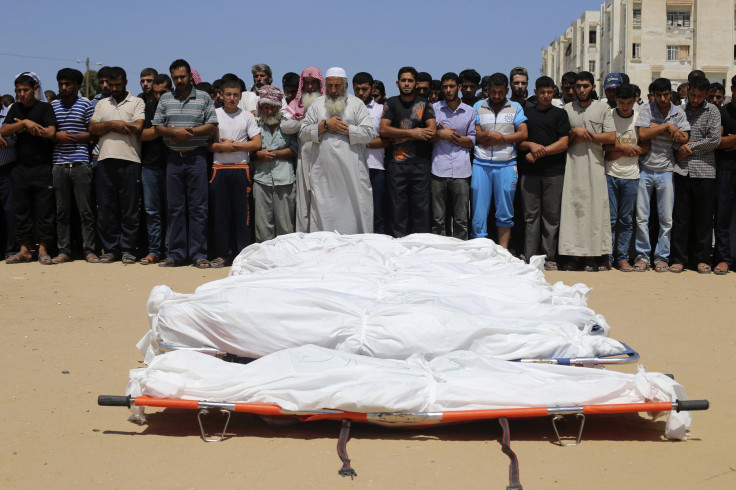Massacre In Gaza's Shejaiya Market, At Least 27 Palestinians Killed As Cease-Fire Ends

An Israeli artillery shell hit a busy market in the Gaza City neighborhood of Shejaiya on Wednesday.
The death toll in one of Gaza’s poorest and most crowded neighborhoods is still not confirmed, but International Business Times' reporter on the scene said there are over 200 people injured and at least 17 dead, including a 3-year-old, a 5-year-old and a Palestinian journalist.
“A bloodied, limp body lay in a pool of petrol and mud, his head crushed,” Agence-France Presse wrote.
Chaos at Shifa. 27 killed 200 injured. Bombing nearby
— Erin Banco (@ErinBanco) July 30, 2014Palestinian media reported that at least 33 people were killed since Israel called for a four-hour humanitarian cease-fire on Wednesday, bringing the day's total to almost 100 as of 7 p.m. local time.
Hamas issued a statement regarding the massacre on Facebook, translated by Al-Jazeera.
"The Israelis are committing a deliberate act of revenge and mass murder after failing to make any military progress in the military against the Palestinian resistance. Such a desperate attempt will not succeed in breaking the will of the patient resilient Palestinian people. The blood of innocent people in Gaza will not be shed in vain and the hand of justice will reach all of those who planned and carried out these massacres. History will not show mercy on all of those who remain silent or fail to protect and defend the Palestinian people."
Huge plume of black smoke coming from Shaja'iya - something still burning. Bodies on the floor, people w limbs blown off #skybreaking
— Sherine Tadros (@SherineT) July 30, 2014Israel called for a humanitarian truce earlier on Wednesday but said it would not include places in Gaza where soldiers were currently operating, including Shejaiya. Hamas rejected the pause in fighting, saying Israel was only doing this for “media purposes.”
Over a week ago, Shejaiya was the site of another one of Gaza’s bloodiest days, when Israeli strikes killed 60 people in an overnight attack. Bodies, many of them children, were strewn across the rubble and homes were flattened. Shelling lasted so long that most ambulances weren’t able to get to the victims and, according to The Nation, many died from bleeding out.
© Copyright IBTimes 2024. All rights reserved.












